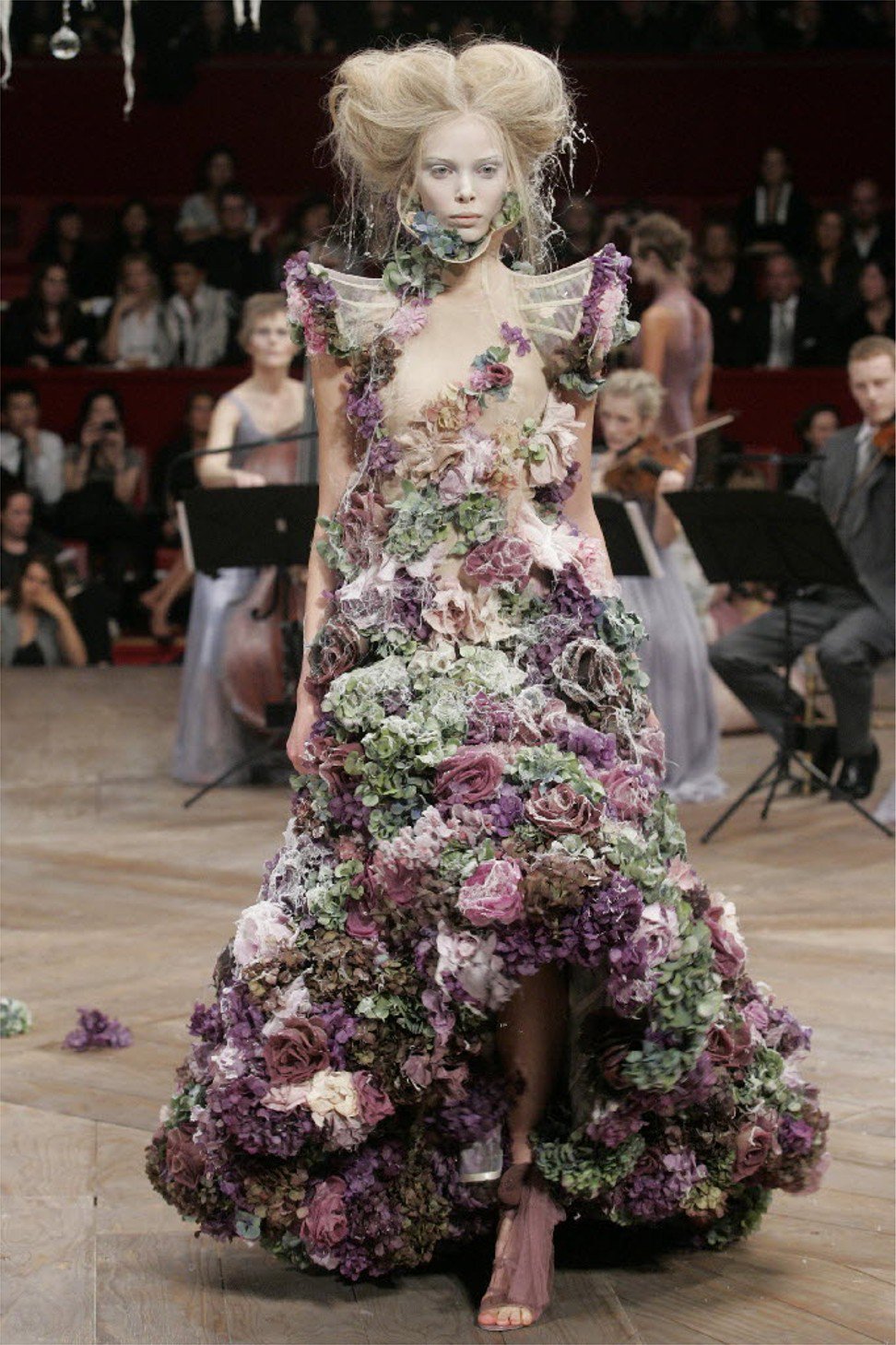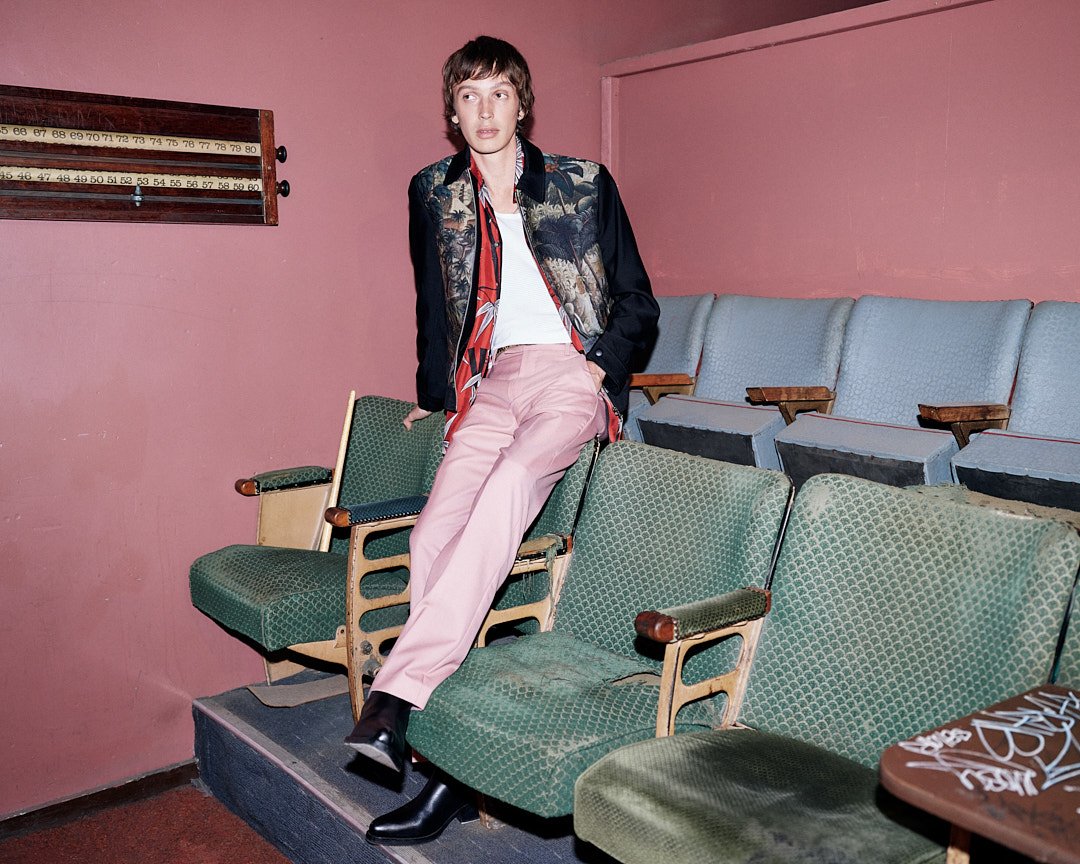PAGE Magazine: Alexander McQueen Tribute
Photographed by Ann Deniau
l by Joseph Benjamin
Fashion designer. Lee Alexander McQueen was born on March 17, 1969, into a working-class family living in public housing in London's Lewisham district. His father, Ronald, was a cab driver, and his mother, Joyce, taught social science. On their small incomes, they supported McQueen and his five siblings. McQueen, called "Lee" by his friends for most of his life, recognized his homosexuality at an early age and was teased extensively about it by schoolmates.
At age 16, McQueen dropped out of school. He found work on Savile Row, a street in London's Mayfair district famous for offering made-to-order men's suits. He worked first with the tailor shop Anderson and Shephard and then moved to nearby Gieves and Hawkes.
McQueen decided to further his clothes-making career and moved on from Savile Row. McQueen began working with theatrical costume designers Angels and Bermans. The dramatic style of the clothing he made there would become a signature of his later independent design work. McQueen then left London for a short stint in Milan, where he worked as a design assistant to Italian fashion designer Romeo Gigli. Upon his return to London, he enrolled at Central Saint Martin's College of Art & Design and received his M.A. in fashion design in 1992. The collection he produced as the culminating project of his degree was inspired by Jack the Ripper and was famously bought in its entirety by the well-known London stylist and eccentric Isabella Blow. She became a long-time friend of McQueen, as well as an advocate for his work.
Soon after obtaining his degree, Alexander McQueen started his own business designing clothes for women. He met enormous success with the introduction of his "bumster" pants, so named because of their extremely low-cut waistline. Only four years out of design school, McQueen was named Chief Designer of Louis Vuitton-owned Givenchy, a French haute couture fashion house. Although it was a prestigious job, McQueen took it reluctantly, and his tenure there (from 1996 to 2001) was a tumultuous time in the designer's life. Even as he was pushing the limits of what people expected from fashion (one of his shows featured a model who was an amputee walking the runway on carved wooden legs), McQueen felt he was being held back.
Photographed by Patrick Demarchelier
He would later say that the job "constrain his creativity." However, he also made the following admission: "I treated Givenchy badly. It was just money to me. But there was nothing I could do: the only way it would have worked would have been if they had allowed me to change the whole concept of the house, to give it a new identity, and they never wanted me to do that." Even with his reservations about his work, McQueen won British Designer of the year in 1996, 1997, and 2001, all during his time at Givenchy.
In 2000, Gucci bought a 51 percent stake in Alexander McQueen's private company and provided the capital for McQueen to expand his business. McQueen left Givenchy shortly thereafter. In 2003, McQueen was declared International Designer of the Year by the Council of Fashion Designers of America and A Most Excellent Commander of the British Empire by the Queen of England and won yet another British Designer of the Year honor. Meanwhile, McQueen opened stores in New York, Milan, London, Las Vegas and Los Angeles. With the help of Gucci's investment, McQueen had become even more successful than he was before. Already known for the flair and passion of his shows, McQueen produced even more interesting spectacles after leaving Givenchy. For example, a hologram of model Kate Moss floated ethereally at the showing of his 2006 Fall/Winter line.
Dedicated to the late designer, Alexander McQueen. Known for his outstanding creativity and innovation. The fashion industry remembers you, as a god among men.
Photographed by Ann Deniau
Featured









To succeed in the MCAT, it is important to come up with a proper study plan that guarantees the retention of a large amount of material.